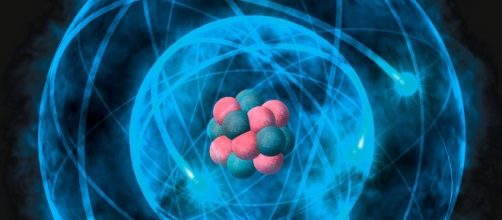An experiment known by OLYMPUS has demonstrated that when an electron hits a proton two photons are produced, in contradiction with the theoretical prediction that only one photon is produced in this collision. These results make scientists closer to understanding the structure of protons more than before.
The results were published in Physical Review Letters under the title ''Hard Two-Photon Contribution to Elastic Lepton-Proton Scattering Determined by the OLYMPUS Experiment.''
Particle collision
Colliding subatomic particles together has been the most successful way used by experimental physicists to explore the subatomic world or to confirm a theoretical prediction from our physical theories.
When two moving particles collide, they either hit and repel like billiard balls, or they produce a high amount of energy which causes the formation (shattering) of other particles, depending on the energy and strength of the collision. In many cases when two particles collide they produce other particles that were not present within the original colliding particles.
Physicists have been discovering the structure of protons, the Subatomic Particles that exist inside the atomic nucleus, by colliding it with electrons to see what will happen after. For many years scientists have believed that when a proton hit an electron they produce a single photon.
But this view has been challenged by experiments in the early 2000s.
Doubting the facts
Since the early 2000s, scientists started making electron-proton collision experiments with polarized electron beams to measure the spin of protons and electrons, in which they are able to identify more accurately what is being scattered after a particle collision.
These experiments showed that the ratio between the resulting electric energy and magnetic energy after a collision decrease dramatically, indicating that more than one photon is being produced after that collision.
These experiments also predicted that the two produced photons with be high energy particles.
The OLYMPUS experiment
Researchers from the Massachusetts Institute of Technology have been testing this very idea for a long time through an experiment they call OLYMPUS. In the experiment, the physicists hit the proton with an electron and a positron (anti-electron) separately and comparing the two interactions to make sure that the collision produces two photons instead of one.
After three months collisions and three years analyzing the data, the physicists confirmed that this is a two-photon interaction, confirming previous predictions by other scientists. This result requires that theoretical physicists do some modifications for their theoretical models to match the experiments performed.

